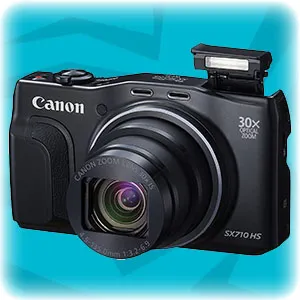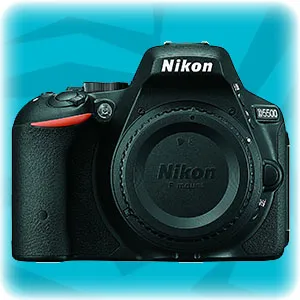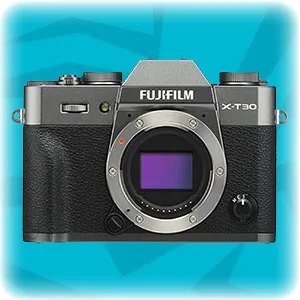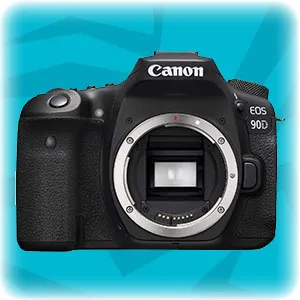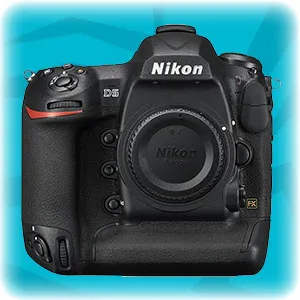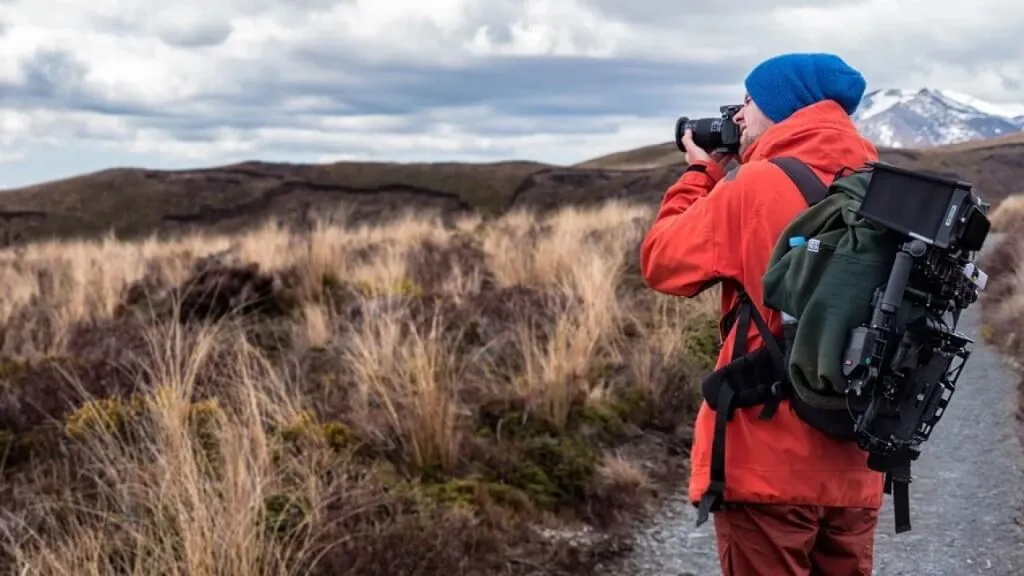
I test my cameras in different fields all the time, and this week i am testing for outdoor photography. After testing 17 different cameras, i shortlisted 5 of them. Out of these 5, i can say that the Fujifilm X-T30 was the best all-purpose camera that can handle anything you throw at it. I will talk about each camera i tested in the following paragraphs, so make sure you read everything!
For those that can’t stand the noise of the city and want to be one with nature at every opportunity, then you must take on photography. Photography opportunities in nature are endless, and while you can take some decent photographs with your smartphone camera, the results won’t be nearly as impressive as with a proper camera, regardless if it is a point-and-shoot, DSLR, a mirrorless interchangeable lens camera or something different. There are somethings that smartphone cameras just can’t do.
For that reason today I will present you with the best cameras for outdoor photography, the top picks chosen by me based on the set criteria, on performance, durability, value for the price, market research, and buyer feedback. Besides the picks, I will try to provide some tips on how to choose the right camera for outdoor photography in the qualities to consider section. Now without further ado, let’s get going.
| Image | Product | Rating | Price |
|---|---|---|---|
|
Best Focus System
 |
Nikon D5
|
10
|
Check Price On Amazon |
|
Best For Wildlife
 |
Canon EOS 90D
|
9.8
|
Check Price On Amazon |
|
Best Under $1000
 |
Fujifilm X-T30
|
9.6
|
Check Price On Amazon |
|
Best For Beginners
 |
Nikon D5500
|
9.5
|
Check Price On Amazon |
|
Best Travel Zoom
 |
Canon PowerShot SX710 HS
|
9.2
|
Check Price On Amazon |
The 5 Best Cameras For Outdoor Photography
Here are our 5 favorite cameras for outdoor photography:
5. Canon PowerShot SX710 HS
For outdoor photography, I always recommend DSLRs or mirrorless interchangeable lens cameras, however, to every rule there is an exception, as the Canon PowerShot SX710 HS is definitely a worthy point and shoot camera that will deliver a great performance for outdoor photography because this camera has all the necessary qualities plus value for the price factor.
In terms, fo features and specs this point-and-shoot camera is definitely an interesting option, as you really wouldn’t expect this type of performance from it. It is equipped with a 20.3 megapixel 1/2.3 type back-illuminated CMOS sensor and a DIGIC 6 image processor with the iSAPS technology. It has a nice lens with a 30x optical zoom and a good image stabilization system inside it. Moving on it has a 9 point contrast-detect autofocus system and it can shoot 6 frames per second in the continuous drive mode, definitely a worthy competitor.
Upon unboxing I was quite impressed with the Canon PowerShot SX710 HS since this camera besides being an affordable point-and-shoot model looked and felt pretty capable. It is pretty small yet feels pretty substantial in the hands. One of the things that impressed me the most was that this camera delivered some enthusiast-level controls, which I didn’t really expect. I think that both beginners and experienced photographers can have plenty of fun with this camera. Top-notch first impression.
I spent some time with this camera and tried to use it in various scenarios, portraits, landscapes, and especially outdoors, and it excelled especially in natural light conditions for outdoors and nature photography. It focused rather quickly, despite being a pretty cheap model. In high ISO settings, it fared pretty good and I am quite impressed with everything that this little fellow offered, and I think that you must consider this.
4. Nikon D5500
Coming up next we have the Nikon D5500, which is dedicated as an entry-level camera for beginners that want a bit more creative control over their photography, and it delivers great performance for outdoor photography. This camera will provide you with ample fun and amazing photographs, well besides its rather great value for the price factor that made the claim even more impressive.
The Nikon D5500 was released in 2015, which is 5 years ago, but still, this camera has aged rather well and delivered some great features and specs. The camera is packed with a 24-megapixel APS-C size CMOS sensor that goes hand to hand with the Expeed 4 image processor. I should mention that the ISO range of this camera spans from 100 to 25,600 and it has 12 white balance presets. In the autofocus department, this camera has a contrast-detect sensor with 39 focus points. When it comes to speed though, this camera can shoot 5 frames per second in the burst shooting mode and it can shoot 820 photos with a single battery charge.
Before getting this camera, just by looking at its specs I expected a rather large camera, but no the Nikon D5500 measures about 4.88×3.82×2.76-inches in total and weighs 420grams with the batteries. However, it still has a solid monocoque construction that is pretty durable and sturdy. I should also state that the camera has a pretty ergonomic shape allowing you to get a pretty secure grip. The controls though are excellent, giving you a great amount of creative freedom that you wouldn’t expect from a camera at this price.
During my testing, I fell in love with this camera, especially at the detail retention, which combined the powers of the 24MP sensor and the lack of anti-aliasing filter. Further on the colors were rather natural and pretty friendly. The noise was eliminated excellently even in the higher sensitivity modes. If you want a camera that will deliver you ample fun this is it.
3. Fujifilm X-T30
I am a big fan of Fujifilm cameras because they deliver some of the best cameras out there while still being underrated, and they have been one of the leaders of the “mirrorless revolution”. The Fujifilm X-T30 is one of the best examples though, especially for outdoor photography, it does plenty of things right, without a lot of compromises, and amazing value for the price, one of my favorites overall.
I am extremely surprised as to why this camera is at this price, as the manufacturer can definitely raise the price a lot, based just on the specs and features. This camera is packing a 26-megapixel APS-C size BSI-CMOS sensor that is tried and tested. Also, it has the X-Processor 4 for image processing and the X-Trans homegrown color filter array. The ISO range spans from 80 to 51,200 and it has 7 white balance presets. The autofocus is pretty impressive though as it has a hybrid autofocus system with 425 focus points in total. The biggest selling point of this came is that it can shoot 30 frames per second in the continuous drive mode and has a battery life of 380 shots.
If you know its predecessor you will notice this camera instantly, as it has not changed much in the looks department. However, it is slightly smaller and lighter, as it weighs just 383grams in total, this includes the battery and the memory card as well. Keep in mind that this beast is constructed with metal all around, but it has no weather sealing, unfortunately, and this is its only downside, right alongside its shallow handgrip, which might be a problem if you combine it with heavier lenses. But overall with the controls and everything included everything looks and feels right with this camera.
In real-world tests this camera definitely impresses any photographer, it doesn’t matter if you are a pro or a beginner this thing is excellent, and everyone can find a good use for it. The colors are definitely the best, as always with Fuji. But what impressed me the most were the Film Simulation modes that worked wonders in different scenarios.
2. Canon 90D
Nearing the top of the list, I decided to bring in the big guns, and first, off I have one of the most impressive DSLR models that are released in the last few years, the Canon 90D. This camera comes as one of the most feature-packed packages in the market, with a superb sensor, great speed, amazing autofocus, ergonomic body and much more, the Canon 90D simply does it all.
The Canon 90D was released in 2019 and comes with all the cutting edge technology that Canon possesses in its mid-range lineup. This camera is packed with a 33-megapixel APS-C size CMOS sensor that is packed with the brand new DIGIC 8 image processor. It has an ISO range that spans from 100 to 51,200 and it has 6 white balance presets. The autofocus system is a contrast-detect one with 45 cross-type points. This camera can shoot 11 frames per second in the burst shooting mode and it has a battery life of 1300 shots.
Don’t mind me saying that this is a big gun since this camera is pretty small and lightweight compared to most of the cameras in its category as it measures 3×5.5×4.1-inches in total and weighs 701 grams with the battery and memory card included. What is more impressive is that it has a great weight distribution that works rather well even when combined with larger lenses. It helps that it has a great deep handgrip and thumb grip in the back as well. The controls are excellent but if you are a beginner you will feel a little overwhelmed.
In real life performance, the Canon 90D is a capable tool, meaning it is not just numbers and tech jargon, as it combines all of its features and performances well. IT has a great 216-zone metering system that does a perfect job of capturing exposure. The burst shooting speed is excellent as well and it stays focused at all times. It handles noise pretty good in the high ISO levels and I think that this is as good as it gets for a mid-range DSLR.
1. Nikon D5
On top of the list, we have none other than the Nikon D5. This camera is an action legend and for all the right reasons, it is extremely durable, has one of the best autofocus systems, the best continuous shooting speed, buffer capacity, battery life, and the most impressive video shooting capabilities.
This camera is super expensive though, since it is really a professional level camera, and it would be an overkill for most enthusiasts. I should state that this camera has a 21 megapixel full-frame CMOS sensor, which goes along rather well with the Expeed 5 image processor. The Nikon D5 has an ISO range that spans from 50 to a whopping 3,280,000 and has a total of 12 white balance presets. The autofocus performance of contrast-detect and phase-detect systems with 153 focus points and the burst shooting speed of 14 frames per second without losing focus sets it apart from the competition.
Right upon unboxing you will see that the Nikon D5 is one hell of a camera, it is a large one and a heavy one. It measures a beastly 6.3×6.3×3.63-inches in total and weighs about 1415 grams with the battery in it. However, it is incredibly comfortable to hold and if you are an experienced Nikon photographer all the better. This camera can perform even in the most extreme conditions, freezing, scalding hot, storms and whatnot, this camera will handle everything as it is tested against everything. The controls are a bit complicated even for my standards, but nothing a pro can’t handle.
In every single aspect, the Nikon D5 is a phenomenal machine, it definitely beats everything in its way. The focus performance is definitely innovative and it is pretty close to real life, something not a lot of cameras can boast. That focus applies to the 12 frames per second shooting mode with autoexposure which is marvelous. The low light performance was amazing as well, and I think that if you can afford it this is one of the best cameras that money can buy, especially for outdoor photography.
You Might Also Be Interested In:
- Cameras For eBay Sellers
- Cameras For Macro Photography
- Cameras For Film Students
- Cameras For Concert Photography
Things To Look For Before Buying A Camera For Outdoor Photography
Sensor
Not just for outdoor photography, but for every camera, you will need to take a look first at the sensor of the camera before buying. Most of the time the sensor fo the camera is a surefire way to tell if it is better than the others. If it is a full-frame sensor all the better, but then again if it is out of your budget don’t worry about it, just make sure to get a camera from a trusted manufacturer, since most of the are fail-safe.
Just like the sensor, the lens is also very important. Different lenses are good for different things. For example, when i go do outdoor photography, i take my lens for bird photography to shoot birds, or i take my zoom lens if i’m using the D5100 and want to do some other wildlife photography. Always remember that the lens is as important as, if not more important than the camera.
Weather Sealing and Durability
Since you will be mostly out and about in nature you will need a camera that can withstand the conditions of nature. So for an outdoor photography camera durability and at least some form of weather sealing is a must.
Check to see what kind of materials the manufacturer has used in the construction, read reviews about the durability of the camera to make sure. Also, check for weather-proofing in the form of water and dust proofing.
Shooting Speed
Since you are shooting in nature you will most likely shoot animals as well, and as you know they don’t quite like staying in the same place. So for that reason, I would recommend you invest in a camera that has a good shooting speed. This is market by FPS or frames per second, mostly at the burst shooting mode. If the camera can shoot 8 frames per second than it is more than enough for most scenarios.
Always Having The Proper Gear
Outdoors are interesting, anything can happen at any time. Having all the appropriate gear with you at all times is a must.
When i go for outdoor photography, i usually take my landscape lens, street photography lens and my lens for pet photography with me. Along with the lenses, i take a camera backpack, a few extra batteries and a compact tripod.
Conclusion
I hope that I have provided you a good idea about what a good outdoor camera should do. If you stick to the tips above you won’t make a mistake anytime soon when buying a camera for outdoor photography.
Also, don’t forget to check our top picks to get a solid idea about the top lens picks for outdoor portraits, and if you choose one of those options you won’t be disappointed. Have fun!

Camera Tester & Reviewer
I spend most of my time taking photos & videos of everything in sight. Yes, I am a stock photographer and I’ve probably taken more than 700,000 photos so far.
